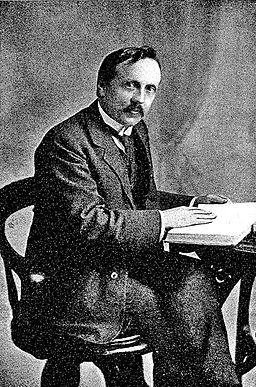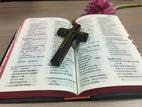And how can anyone preach unless they are sent? As it is written: "How beautiful are the feet of those who bring good news!" (Romans 10:15)
In the history of Christian missions in modern China, a group of foreign missionaries pioneering in different regions and even impacted the local history and peoples. They could be called apostolic missionaries who made great contributions to the evangelism ministry in China.
Here are ten of them and what they did for China.
William Chalmers Burns
Born in Scotland, William Chalmers Burns had a fervent heart for evangelism, encouraged by the book The Pilgrim's Progress ever since he was a child. He started mission tours in Britain and the United States and participated in religious revivals when he was young.
In 1847, Burns gave up his rich life and went to China. He first landed in Xiamen, Fujian, and expanded the mission to Zhangzhou as the first stop of evangelism in southern Fujian. Afterwards, he went on to preach in places like Nanjing, Shantou, and Beijing. He died in Newchwang (Yingkou, Liaoning Province).
One of his mottos was "Lord, here am I. Send me." Hudson Taylor regarded Burns as one of his "spiritual mentors" and learned much spiritual knowledge from him, building a solid foundation to establish the China Inland Mission. In addition, Burns was the first to complete the Chinese translation of The Pilgrim's Progress.
Cartairs Douglas
Cartairs Douglas, a Scottish missionary, left Britain for Amoy (Xiamen) in 1855. The next year he began missions in Anhai Town, Quanzhou, but the work was strongly opposed by the locals. However, he insisted on preaching and establishing local believers. He also built churches in southern Fujian.
In 1860, he visited Formosa (modern Taiwan) and found that the cultural environment was basically the same as that in southern Fujian, so he appealed to the English Presbyterian Mission to send missionaries to the island. Later many preachers headed to Taiwan and brought a new revival.
In 1877, he was elected joint Chairman of the Shanghai Missionary Conference. His opinion that missionaries to China might be the most outstanding because China was the greatest among the non-Christian countries motivated more people to share the gospel in the country.
James Outram Fraser
Known as the "apostle to the Lisu People", James O. Fraser was a missionary of the China Inland Mission (CIM). Seeing the spiritual need in China, the top student in Imperial College of London dedicated his life to the mission in China. He came to China in 1908 and spent the rest of his life working among the Lisu, an ethnic minority in southwest China. In 1913, Fraser and his colleagues entered the areas where the Lisu lived. Five years later, the number of Lisu Christians increased to 60,000.
Apart from missions, he helped the ethnic group alter their old customs and habits and quit opium. He created the Fraser alphabet for the Lisu language so that Lisu Christians could read the Bible in their own language. Furthermore, he preached to other minorities like Jingpo, Lahu, and Wa. His ministry changed the history of the Lisu people. In the 1990s, Christians accounted for 90% of Lisu's total population, making Lisu the most Christianized people in China.
Jesse Boardman Hartwell
Hartwell was a son of a pastor of the Southern Baptist Convention, full of enthusiasm for the overseas mission when he was a child.
He arrived in Shanghai in 1858. Two years later, Hartwell and his wife went to pioneer in Chefoo (modern Yantai), Shandong.
The first Baptist church in north China was founded on October 5, 1862. Centered around the church, the mission was expanded to surrounding counties and cities. Many converted and several churches were set up.
In 1875, Hartwell returned to the United States and continued the mission work among the Chinese. He served Chinese Americans in San Franciso for 14 years, contributing much to the local Chinese church.
Jonathan Goforth
Despite lacking a passion for the Christian faith, the Presbyterian missionary was transformed by an amazing experience at 18. He arrived in Chefoo in 1888 and later moved to Henan. Under extremely difficult conditions, Goforth brought up a revival. At the end of the nineteenth century, he led tens of thousands of people in Henan to follow Jesus.
He headed to Pyongyang, North Korea. In 1907, he witnessed the Korean revival. What was more, he preached in the army of Feng Yuxiang, a Chinese warlord and leader, and reaped converts among the soldiers. In his later years, he went to northeast China. Goforth set up mission stations in Jilin Province and preached in Liaoning Province.
James Gilmour
Gilmour was born to a Scottish Christian family. He reached Beijing in May 1870 and encountered some Mongolians. Touched that many people in Mongolia had never heard the gospel, he resolved to preach in Mongolia.
In the following years, Gilmour carried out missionary work in Mongolia, sometimes with his wife. They preached to nomads and had to live in yurts. Tens of thousands of Mongolians heard his preaching and a large percentage were baptized. Gilmour wrote down his twelve-year experience in China in his book Among the Mongols, calling for more attention to evangelism to the Mongols.
In his last days, he preached to more than 20,000 people in Mongolia, sold over 3,000 books, and distributed over 4,000 free gospel tracts.
Griffith John
Griffith John and his wife arrived in Shanghai in 1855. Besides preaching, he attempted to persuade the leaders of the Taiping Heavenly Kingdom like Hong Xiuquan to abandon their heretical faith.
In 1861, John traveled west along the Yangtze River and reached Wuhan on June 21, becoming the first Protestant missionary to central China. He preached the gospel openly in public areas while traveling. At times he traveled for over 3,000 miles, leaving his footprints in Hubei, Hunan, and Sichuan. Churches were set up in those areas. He claimed that he established over 100 mission stations in Hubei.
Percy Cunningham Mather
The railway employee quit his job and arrived in Shanghai in 1910 under the guidance of the Holy Spirit.
Before long, he sensed the spiritual need of people in Xinjiang. In 1914, he arrived there. The special environment there didn't scare him. He learned the local cultures and befriended many Muslims. As a result, many locals gradually accepted the gospel.
In 1926, he and a Uygur worker traveled a circuit in north Xinjiang to reach Kazakhs and Mongolians. However, he was infected with typhus during his medical work and died.
Robert Samuel Maclay
Maclay's parents were active in spreading the gospel. In 1848, he reached Foochow (Fuzhou), China. Over the next decade, he preached in the city and northern Fujian and led the local people to Christ.
His mission also stretched out to Japan and South Korea. In 1870, he went to Japan and baptized over 1,000 people. In 1884, he set out for Seoul and embarked on the mission on the Korean Peninsula.
Samuel Pollard
In 1887, the young Pollard was inspired by the moving story of David Livingston, the missionary to Africa, and had a fervor to reach Chinese people.
After landing in China for a short time, he preached the gospel in Miao-populated areas of Yunnan and Guizhou. He evangelized in places including Zhaotong and Shimenkan. He led Miao people to Christ, created the Pollard Miao script, and founded schools and hospitals. His work promoted the development of science, education and other social undertakings in those areas. Shimenkan quickly became the state-of-the-art area in southwest Miao culture.
- Translated by Karen Luo















